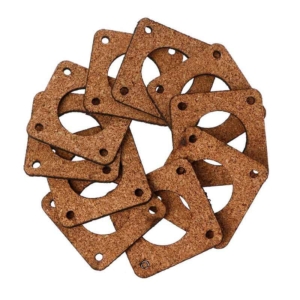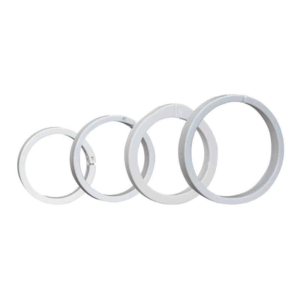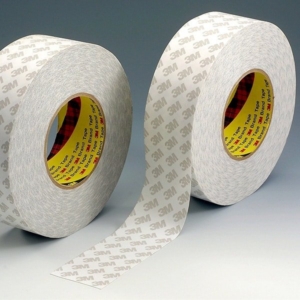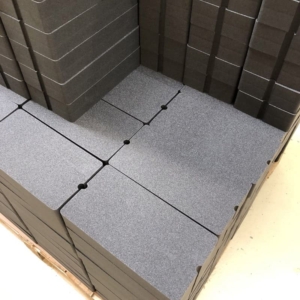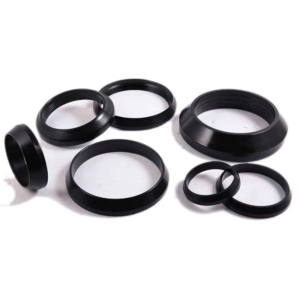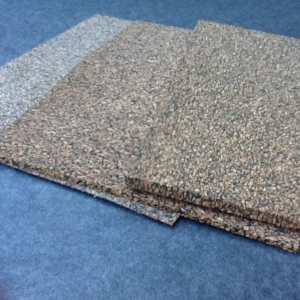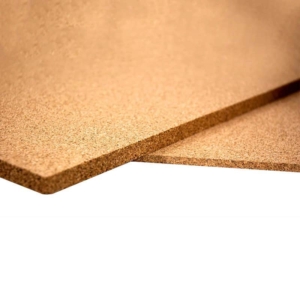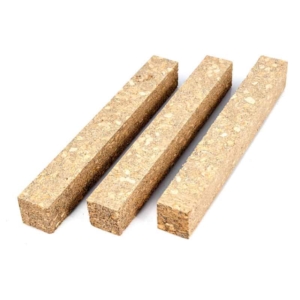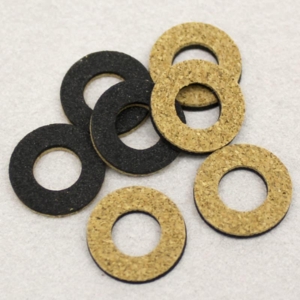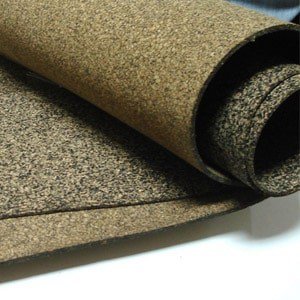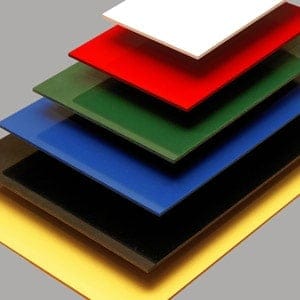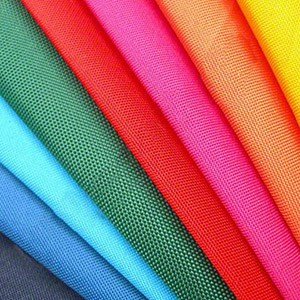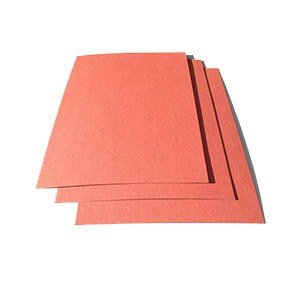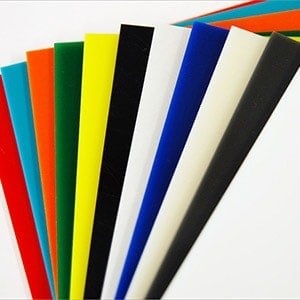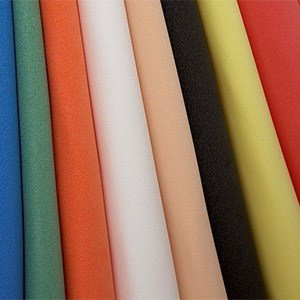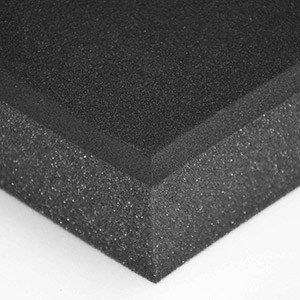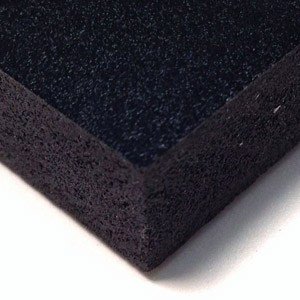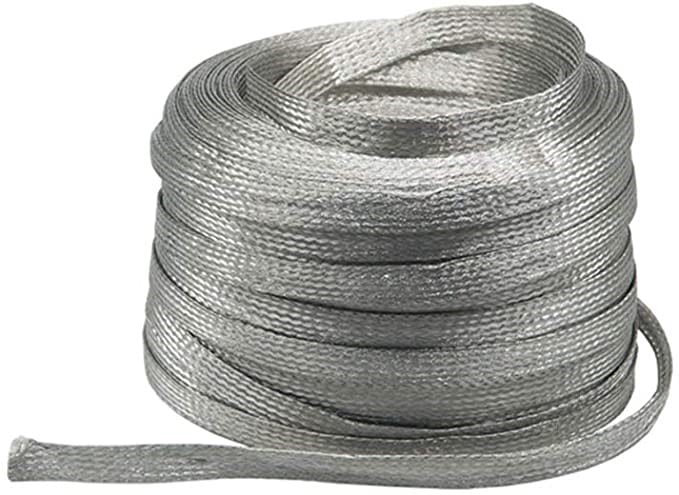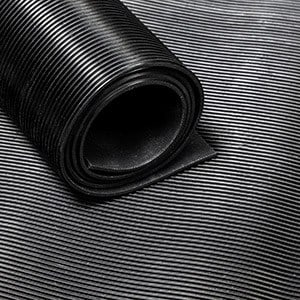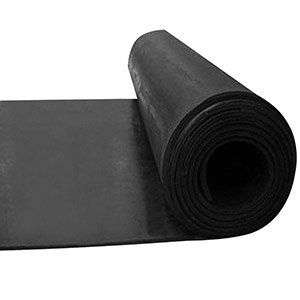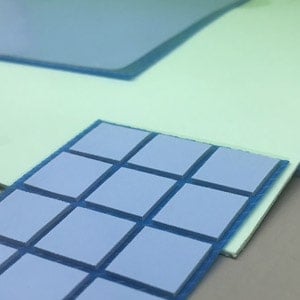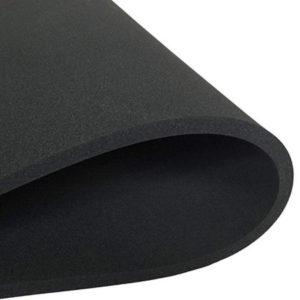Glossary
Help with our Glossary
If you would like to speak to a representative to discuss your specific application or requirements please call our sales office direct on 01384 469100, alternatively you can send an E-mail. Simply click on the link and forward us your details along with your question and we will contact you immediately.
Initials used as an abbreviation for the American Society for Testing and Materials, which is an organization devoted to the establishment of standard methods and procedures of testing.
Note that ISO is not an acronym; instead, the name derives from the Greek word iso, which means equal. Founded in 1946, ISO is an international organization composed of national standards bodies from over 75 countries.
Standard Test Methods for Flexible Cellular Materials made From Olefin Polymers, or blends of olefin polymers with other polymers.
This specification covers flexible cellular rubber products known as sponge rubber and expanded rubber, but does not apply to latex foam rubber or ebonite cellular rubber. The base material for an open/closed cellular product may be made of synthetic, natural, or reclaimed rubber, or a mixture, and may contain other polymers or chemicals, or both, which may be modified by organic or inorganic additives. The cellular rubber shall be categorized by types, classes, suffixes, and grades: Types 1 and 2; Classes A, B, C, and D; Grades 0, 1, 2, 3, 4, and 5. The various grades of cellular rubber shall conform to the requirements as to physical properties specified. Read more on ASTM-D-1056
This British Standard specifies compositional and physical property requirements for general purpose acrylonitrile-butadiene rubber compounds of hardness range 40 IRHD to 90 IRHD, designated BA40, BA50, BA60, BA70, BA80, BA90, and for an electrical grade acrylonitrile-butadiene rubber compound. Of hardness 60 IRHD, designated E.
These compounds are intended for the manufacture of items in the form of extrusions, mouldings, sheet and items cut or punched from sheet in which resistance to certain organic liquids is a necessary property, and where some stiffening of the harder grades at temperatures below -20 degrees C can be tolerated.
This British Standard specifies compositional and physical property requirements for five chloroprene rubber compounds of hardness range 40 IRHD to 80 IRHD, designated C40, C50, C60, C70 and C80.
These compounds are intended for the manufacture of items in the form of extrusions, mouldings, moulded or calendered sheet and for items cut or punched from sheet.
It is emphasized that this standard covers chloroprene rubber compounds for general purpose applications and does not require the special compounding which is necessary to achieve improvement in any one specific property.
Cellular foams are composed of millions of small cavities or cells. These cells may be interconnecting, open-cell, or non-connecting, closed-cell. Most of the cells or bubbles in a closed-cell foam are not broken; they resemble inflated balloons compressed together in a compact configuration. By open-cell we mean that each cell is connected to the other with an opening so that water, air or gas can pass through them, similar to the way water is absorbed by a dish sponge. The cell walls, or surfaces of the bubbles, are broken and air fills all of the spaces in the material.
A Class ‘A’ surface is defined as any exposed part of an automotive interior or exterior. The packaging utilized in the production, handling, and delivery of automobile parts must not in any way, affect the quality of the product. The parts must remain in the same condition as they were when originally produced. This includes any visual defects such as stains, burns, scrapes, haze, excess surface roughness, discolouration, etc.
Class 1 Spread of Flame. A surface Spread of Flame classification of Class 1-4 is achieved using the BS 476: part 7 method for the classification of the surface spread of flame of products. The test is a means of classifying the rate and speed of the spread of flame of a given product. The product is classed on a rating of 1-4, 1 being the best result.
Class 0 Fire Propagation. The Class 0 test requires the product to have already had a Class 1 spread of flame classification. This test, using the principles of BS 476: part 6: 1989, examines the contribution that the product would give to the growth of a fire. If the product achieves a Class 0 classification then its fire propagation rating is seen to be acceptable according to appropriate specifications.
Certificate of Conformity
Certificate of Test
A term applied to a cellular material in which the cells are formed by gases generated from thermal decomposition or other chemical reaction of a Chemical Blowing Agent (CBA).
The measure of the compressive strength of a cellular product. In other words, the force required to compress a material 25% of its original thickness. It can be expressed in lb/in² (pounds per square inch) or kPa (Kilopascal). 1 PSI is equivalent to 6.89476 Kpa
The residual decrease in thickness of a test specimen measured 30 minutes or 24 hours after removal from a suitable loading device in which the specimen had been subjected for a definite time to compressive deformation under specified conditions of load and temperature.
This is covalent bonding of polymer chains into a 3-dimensional polymer network. This gives the polymer increased strength resulting in superior properties. Crosslinking can be achieved by either physical (by irradiation ) or by chemical means( by peroxide).
The weight in solids of a unit volume of material expressed in pounds per cubic foot (PCF) or grams per cubic centimeter (g/cm³). In other words, it is the ratio of the mass of a body to its volume.
An instrument used to measure hardness of elastic materials. Durometer is also used to reference a scale of hardness; ie, a low durometer implies a soft material. Types of durometers include Shore A, D and 00. The picture below gives a good example of the hardness scale.
Elastomers are polymer resins that when foamed exhibit exceptional elongation properties, and show a more rubber-like, and softer feel.
The percent that a specially shaped sample will stretch from its original length before tearing or breaking. Expressed as a percentage, this test is used to measure the length of stretch in a material before it breaks. – (Test Method ASTM D3575)
Also known as beadboard.
Ethylene Vinyl Acetate. It is generally used as a co-polymer in polyolefin foams resulting in greater resilience , higher tensile and tear performance and a softer feel.
Federal Motor Vehicle Safety Standard. This specification (302) describes test procedures used to determine the burn rate of parts, portions of parts, and composites used as interior trim parts in passenger cars, multipurpose passenger vehicles, trucks and buses.
The characteristics of a material that pertain to its relative ease and relative ability to sustain combustion.
Resistant to catching fire. Usually, additives included in the manufacturing ingredients to prevent the material from catching fire, although some polymers are naturally resistant.
A product, either flexible or rigid, that has been produced by the internal generation of a gas in a fluid medium that is polymerizing while expanding in volume. The final result is either an open or closed-cell product.
The resistance to indentation, as measured under specific conditions.
The density of a foam sample at its center. Generally, a foam will form a density gradient, with the highest density being at the outer, or skin surface, and the lowest density being at the core of the foam sample.
IRHD (International Rubber Hardness Degrees) provides four methods for the determination of the hardness of vulcanised or thermoplastic rubber surfaces (N, H, L, and M) and four methods for the determination of the apparent hardness of curved surfaces (CN, CH, CL, and CM). The test consists of measuring the difference between the depths of indentation of a ball into a rubber surface under a small initial contact force followed by a large total test force. The methods differ primarily in the diameter of the indenting ball and the magnitude of the indenting force selected according to the hardness of the rubber (Table 2).
| Test method | Indenter diameter / mm |
Contact force / N |
Additional force / N |
Total force / N |
Application |
| N (normal test) |
2,50 ± 0,01 | 0,30 ± 0,02 | 5,40 ± 0,01 | 5,70 ± 0,03 | Thickness >= 4 mm Range: 35 IRHD – 85 IRHD or 30 IRHD – 95 IRHD |
| H (high hardness) |
1,00 ± 0,01 | 0,30 ± 0,02 | 5,40 ± 0,01 | 5,70 ± 0,03 | Thickness >= 4 mm Range: 85 IRHD – 100 IRHD |
| L (low hardness) |
5,00 ± 0,01 | 0,30 ± 0,02 | 5,40 ± 0,01 | 5,70 ± 0,03 | Thickness >= 6 mm Range: 10 IRHD – 35 IRHD |
| M (microtest) |
0,395 ± 0,005 | 0,008 3 ± 0,000 5 | 0,145 ± 0,000 5 | 0,153 3 ± 0,001 | Thickness < 4 mm Range: 35 IRHD – 85 IRHD or 30 IRHD – 95 IRHD |
Note: Hardness values obtained for method N within the ranges 85 IRHD – 95 IRHD and 30 IRHD – 35 IRHD may not agree with the values obtained for method H or method L, respectively.
From the difference in indentation depth D and using the relevant ‘look-up’ curve, the IRHD value can be read. These hardness scales are chosen such that a 0 IRHD value represents the hardness of a material with a zero Young’s modulus and 100 IRHD represents the hardness of a material with an infinite Young’s modulus.
ISO 9001 specifies requirements for a Quality Management System where an organization:
- needs to demonstrate its ability to consistently provide product that meets customer and applicable statutory and regulatory requirements, and…
- aims to enhance customer satisfaction through the effective application of the system, including processes for continual improvement of the system and the assurance of conformity to customer and applicable statutory and regulatory requirements.
Specifies methods for testing flexible and semi-rigid cellular plastics made from polyethylene. Cellular plastics containing copolymers of ethylene or blends of polymers with polyethylene may also be tested by the procedures of this International Standard provided these materials have characteristics similar to polyethylene or copolymers of ethylene.
A measure of the thermal conductivity of heat insulation expressed as BTUs/sq. ft. Lower values indicate better insulating materials.
Accreditation is defined as: the granting of approval to an institution of learning by an official review board after having met specific requirements. This applies to laboratories based on test methods, documentation and traceability.
A term used to describe the code on a material that is used for traceability.
Plastomers are polyolefin resins with a specific gravity of about 0.9g/cc. The resulting foams made using Plastomers are tougher, stronger, and more ‘plastic-like’ than foams produced using traditional polyolefin resins.
A thermoplastic composed of monomers of ethylene.
Also known as flexible urethane.
Polypropylene is a low density extruded material. It is strong, high in stiffness and hard. It has a good chemical resistance to a wide range of substances and is easily used for fabrications in the engineering field. It is welded using hot air or extrusion welding techniques.
Pressure sensitive adhesive (that can be applied to all foams).
A test to determine the shock absorption properties of a foam. On this test, a material is placed flat on an instrument and a weight is dropped onto it from a specified height. The amount of bounce is then taken from a scale to get the final value. The lower the value, the higher the shock absorption properties of the foam.
See Resiliency above.
A somewhat loosely used term describing the ability of a material to cease burning once the source of flame has been removed.
The hardness of rubber compounds is measured by the Shore A Durometer; the higher the Durometer reading, the harder the compound.
Softer compounds stretch easier and seal better on rough surfaces. Harder compounds generally offer greater abrasion resistance.
60 Shore A is softer than 70.
70 Shore A is the standard.
90 Shore A is very stiff/Firm.
A relatively dense layer at the surface of a cellular foam material. This layer is the result of exposure to heat and/or contact with a mould during the manufacturing process.
To shave or cut off the surface of a material in a horizontal manner. Sometimes referred to as splitting, which means to divide sharply or cleanly into layers.
The action of cutting material to different widths.
A document that spells out the requirements for a particular material or group of materials. It normally details the physical properties, performance requirements, general composition, sampling procedure and packaging characteristics.
Is the ratio of the weight or mass of a given volume of a substance to the weight or mass of water in the same given volume. If something has a specific gravity of 1, it has the same specific gravity as water. If a substance has a specific gravity of less than 1 then it will float in water. If a substance has a specific gravity of more than 1 then it will sink in water. Also see Density.
The force required to tear completely across a specifically nicked test specimen or right angle test specimen, by elongating at a specific rate.
The ability of a piece of material to resist propagation of a cut made in the sample. Reference ASTM D-3575.
The minimum and maximum temperature that a material can be exposed to before the physical properties and/or appearance begins to move out of their specification range.
The force required to stretch a material without tearing,. Reference ASTM D-3575.
The permissible deviation from a specified value of a dimension. The upper and lower limits between which a dimension must be held.
An independent, non-profit organization testing for public safety. UL is chartered to establish, maintain, and operate laboratories for the examination and testing of devices, systems, and materials to determine their relation to hazards to life and property.
The UL94 is a specification for testing the flammability of plastic materials used for parts in devices and appliances.
An unintentional cavity occurring in a bun or sheet. It is usually circular in appearance, medium to large in size.
The process of submerging a piece of cellular rubber in distilled water and exposing it to increased atmospheric pressure. The foam is weighed beforehand and afterwards. The test measures the amount of water absorbed by the material. The lower the %, the less water the material absorbs
Non-metallic materials & components, such as rubber sheet material & ‘O’ rings, undergo testing only for their effects on water quality. This type of approval demonstrates that the non-metallic material/component does not itself contaminate the water and therefore satisfies this particular requirement of regulations and bylaws.
The WRC Approved™ scheme is a voluntary ‘fitness for purpose’ certification scheme that many companies have used to help introduce their products into the UK (and International) Water Industry. The Scheme helps demonstrate to purchasers that their product/service is ‘fit for purpose’. Quality, performance and installation issues are all covered in the assessment of the product or service, therefore helping to:
- save the end user time and expense, as they no longer need to validate the product/service performance;
- minimise the risk that they are purchasing something that does not delivery what it promises; and
- Assist progress through the initial procurement process.
End users who specify or acknowledge WRC Approved certification include:
- Water and Sewerage companies
- Insurance Companies
- Manufacturers
- Municipalities
- Contractors
